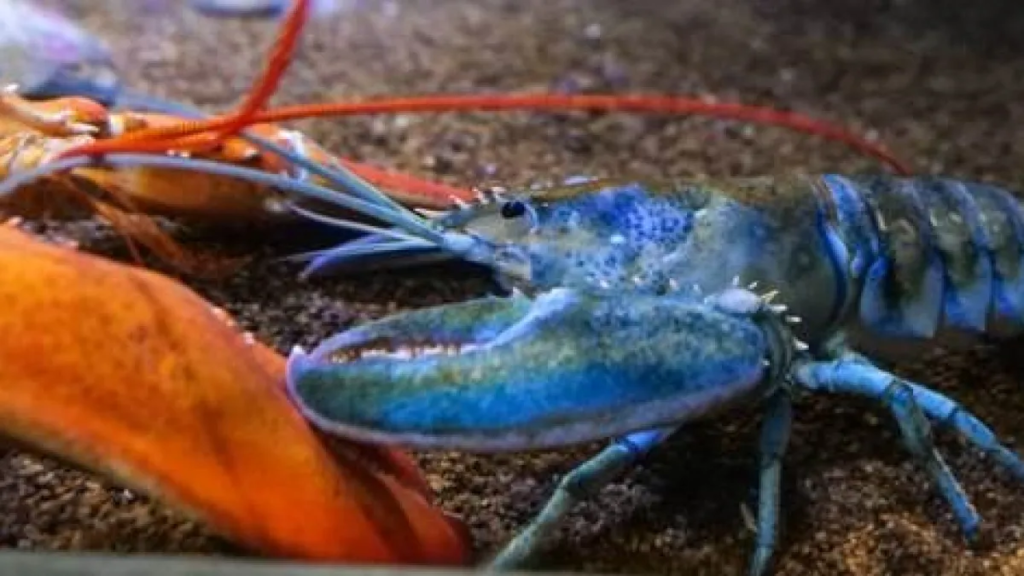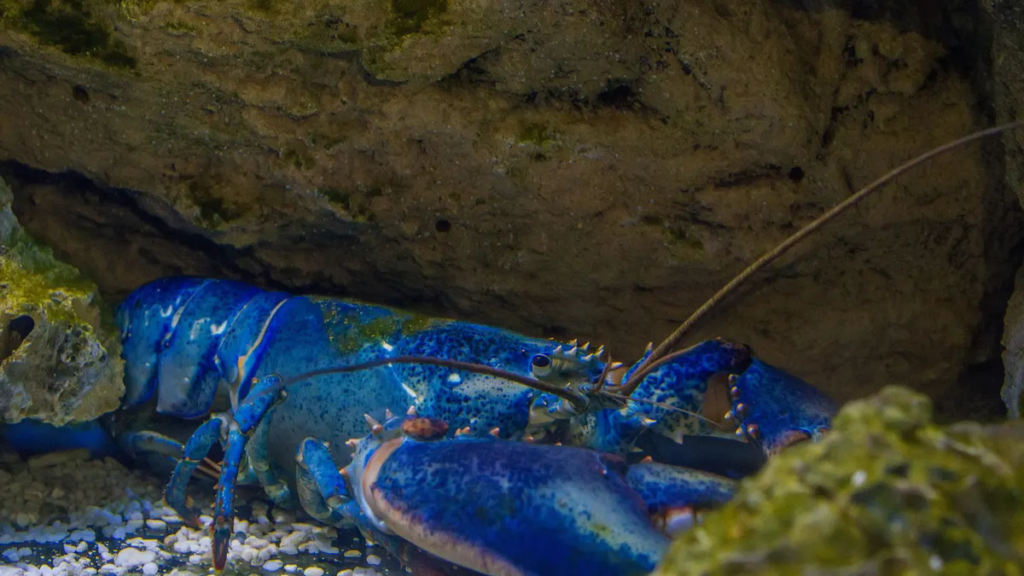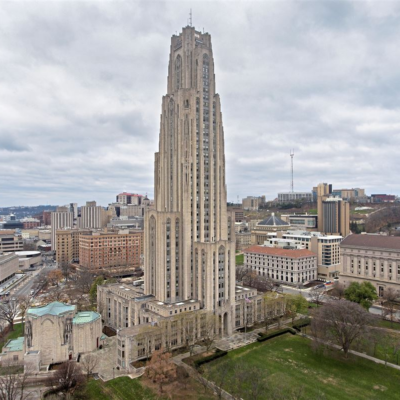The blue lobster, also known as the blue morph lobster, is a rare and stunning variation of the common American lobster (Homarus americanus). While most lobsters are shades of brown, green, or black, the blue lobster stands out for its vibrant, striking blue color, making it one of the most fascinating and rare marine creatures. This rare genetic mutation, known as lobster blue, has captivated scientists and enthusiasts alike due to its rarity and unique beauty.
In this article, we will explore the causes behind this stunning blue color, how blue lobsters are discovered, their significance in both nature and culture, and what makes them so rare.
What Causes a Blue Lobster’s Color?

The blue coloration of the lobster is due to a rare genetic mutation that affects the production of astaxanthin, a protein pigment found in lobsters and many other crustaceans. In most lobsters, astaxanthin is bound to a protein called crustacyanin, which results in the typical brown or greenish color. However, in blue lobsters, a mutation causes the astaxanthin to remain free and not bind to crustacyanin, which results in a vibrant blue hue.
The blue color is not simply a visual anomaly—it reflects a change in the biochemistry of the lobster. The presence of a blue pigment means that, rather than absorbing light in the usual way, the lobsters reflect blue light, causing them to appear almost iridescent under certain lighting conditions.
How Rare Are Blue Lobsters?
Blue lobsters are extremely rare in nature. It’s estimated that only one in every two million lobsters will be blue. The reason for this rarity lies in the genetic mutation, which is a recessive trait. For a lobster to display the blue color, it must inherit the gene from both parents, making the occurrence highly unlikely.
To give you a better understanding, lobsters are typically caught in the waters off the northeastern coast of the United States, where their usual colors range from brown to green, often with slight variations based on environmental factors. The blue variant is so uncommon that when a blue lobster is discovered, it becomes a significant event.
In some cases, fishermen or marine biologists who discover blue lobsters are quick to preserve them for scientific study or as part of marine conservation programs. Some blue lobsters have even been sent to aquariums, where they serve as a remarkable attraction, delighting visitors with their unusual appearance.
Not Just Blue: Other Rare Lobster Colors
While blue lobsters are among the rarest, they are not the only unusual color morphs found in nature. There are several other fascinating variations, including:
- Albino Lobsters: With a completely white appearance and pinkish eyes, albino lobsters are another rare form caused by a genetic mutation that prevents the production of pigments.
- Yellow Lobsters: These lobsters have a bright yellow color, which is also the result of a genetic mutation.
- Red Lobsters: Although lobsters are typically a dull brown or green in the wild, they can turn bright red once cooked due to the heat breaking down the crustacyanin protein. However, rare naturally red lobsters do exist.
- Orange Lobsters: This color is also the result of a mutation, giving the lobster a bright orange hue.
While these color mutations are fascinating, none of them are as iconic or highly sought after as the blue lobster.
Famous Blue Lobster Discoveries

Throughout history, there have been several remarkable blue lobster discoveries that have made headlines. One such instance occurred in 2016, when a blue lobster was caught off the coast of Maine. The lobster was so rare that it became a sensation at the time, with news outlets from around the world covering the story.
Another notable case was in 2011, when a blue lobster was found by a fisherman in Newfoundland. The lobster was eventually preserved and donated to the Royal Ontario Museum, where it became an exhibit. These high-profile discoveries help to highlight the rarity and allure of the blue lobster.
Cultural Significance and Symbolism
The blue lobster has also gained cultural significance in certain regions, often symbolizing good luck or being seen as a “magical” creature. In some places, people have believed that finding a blue lobster is an omen of prosperity or fortune. For example, when a blue lobster is found, some fishermen or marine biologists will release it back into the ocean to avoid disturbing its unique genetic makeup, as it’s seen as a symbol of rare beauty and worth.
In Native American folklore, the lobster is often seen as a creature of transformation and change, with the blue lobster symbolizing the rarity of spiritual growth and new beginnings. For some, the blue lobster represents the rare opportunities that come with embracing change and personal evolution.
Conservation and the Future of Blue Lobsters
Despite their striking beauty, blue lobsters face the same threats as other lobsters in the wild, particularly overfishing, habitat loss, and climate change. As the oceans warm due to climate change, lobsters and other marine species face new challenges that can affect their populations.
In some cases, blue lobsters that are discovered are preserved in aquariums and marine research institutions. Scientists study these lobsters to better understand the underlying genetic mutation and its potential impact on the lobster population. Some researchers are also investigating the environmental factors that contribute to the development of the blue color, as well as whether such lobsters may face additional challenges in the wild due to their rarity and visibility.
As conservation efforts continue to grow, it’s important that lobsters—both blue and otherwise—are sustainably managed. By ensuring the health of the lobster population, we can help protect these rare and extraordinary creatures from the growing threats facing the oceans.
Conclusion: The Blue Lobster’s Uniqueness
The blue lobster is a truly remarkable and rare creature, a living testament to the complexities of nature’s genetic wonders. With only one in every two million lobsters exhibiting this rare color mutation, the blue lobster’s striking appearance and fascinating biology make it a subject of wonder and intrigue. From its unique genetic causes to its cultural significance, the blue lobster is a creature that continues to capture the hearts of marine enthusiasts and scientists alike.
As we continue to learn more about these elusive lobsters, we’re reminded of the vastness and diversity of life in our oceans. The blue lobster may be rare, but it represents the broader mysteries and marvels of the natural world—reminding us of how much we still have to discover in our seas. Whether it’s as a symbol of luck, a scientific curiosity, or simply a natural wonder, the blue lobster remains one of the most captivating creatures of the ocean.
Also Read: Shrimp Tempura: A Crispy and Delicious Seafood Delight






